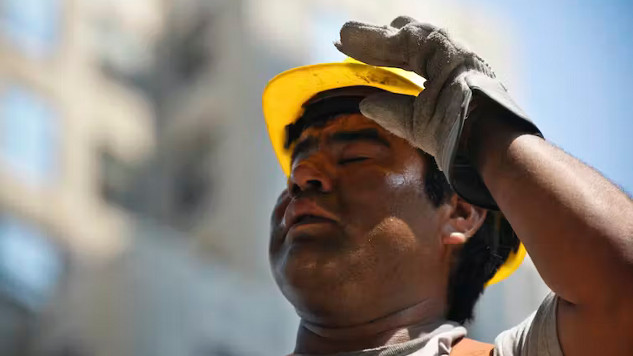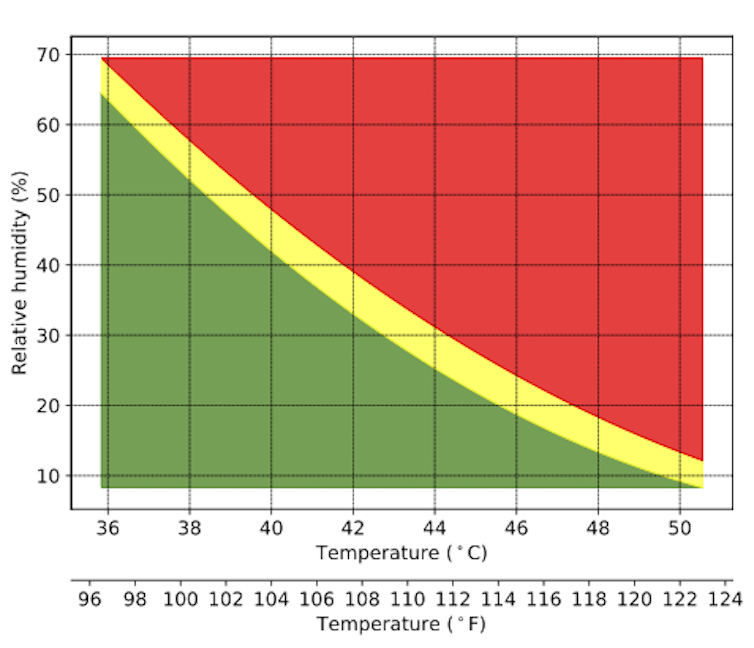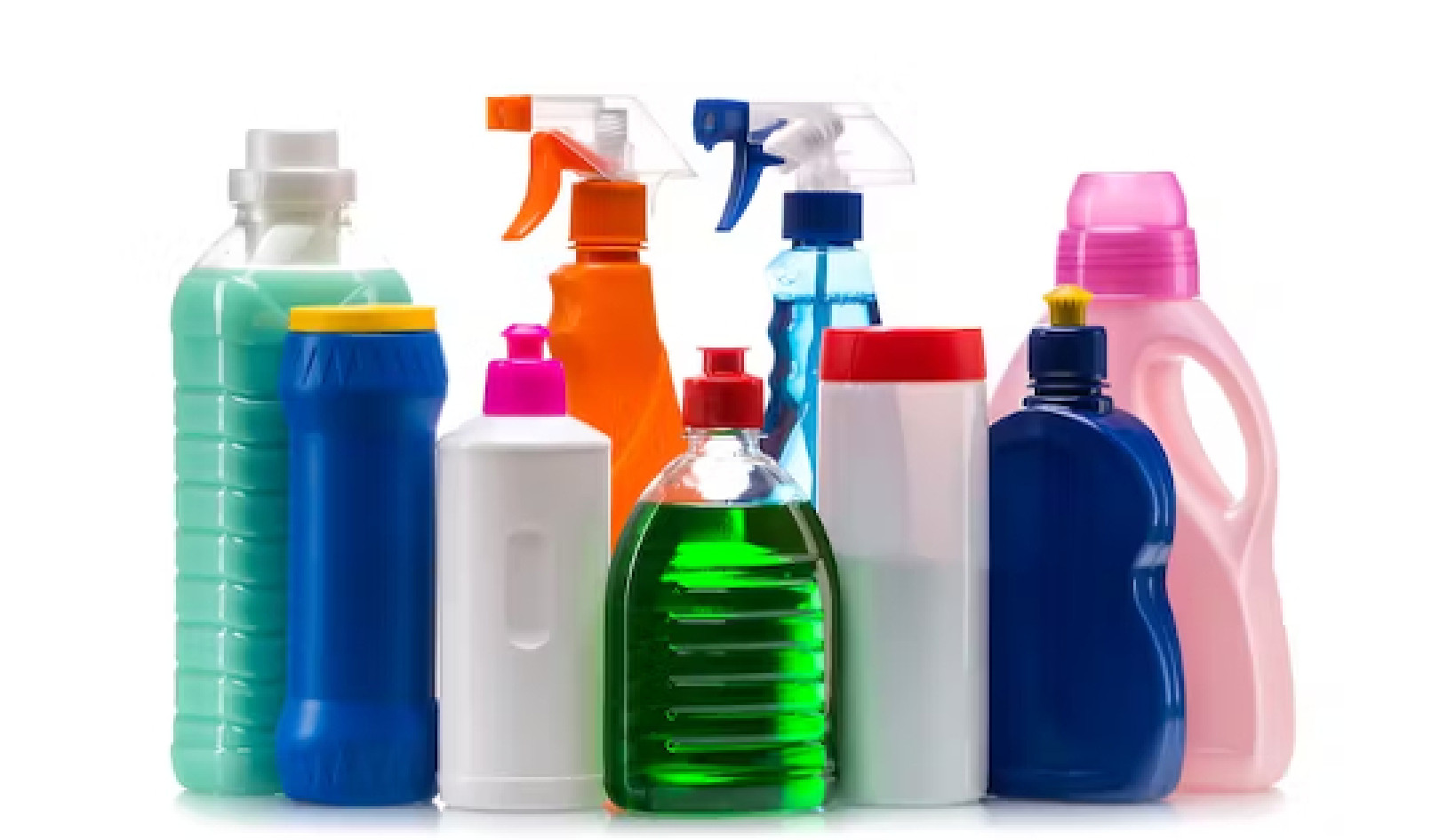
Outdoor workers face higher risks on hot, humid days. AP Photo/Swoan Parker
Extreme heat has been breaking records across Europe, Asia and North America, with millions of people sweltering in heat and humidity well above “normal” for days on end.
Death Valley hit 128 degrees Fahrenheit (53.3 degrees Celsius) on July 16, 2023 – not quite the world’s hottest day on record, but close. Phoenix broke a record heat streak with 19 straight days with temperatures above 110 F (43.3 C), accompanied by a long string of nights that never got below 90 F (32.2 C), leaving little opportunity for people without air conditioning to cool down. Globally, Earth likely had its hottest week on modern record in early July.
Heat waves are becoming supercharged as the climate changes – lasting longer, becoming more frequent and getting just plain hotter.
One question a lot of people are asking is: “When will it get too hot for normal daily activity as we know it, even for young, healthy adults?”
The answer goes beyond the temperature you see on the thermometer. It’s also about humidity. Our research is designed to come up with the combination of the two, measured as “wet-bulb temperature.” Together, heat and humidity put people at greatly increased risk, and the combination gets dangerous at lower levels than scientists previously believed.
The limits of human adaptability
Scientists and other observers have become alarmed about the increasing frequency of extreme heat paired with high humidity.
In the Middle East, Asaluyeh, Iran, recorded an extremely dangerous maximum wet-bulb temperature of 92.7 F (33.7 C) on July 16, 2023 – above our measured upper limit of human adaptability to humid heat. India and Pakistan have both come close, as well.
People often point to a study published in 2010 that theorized that a wet-bulb temperature of 95 F (35 C) – equal to a temperature of 95 F at 100% humidity, or 115 F at 50% humidity – would be the upper limit of safety, beyond which the human body can no longer cool itself by evaporating sweat from the surface of the body to maintain a stable body core temperature.
It was not until recently that this limit was tested on humans in laboratory settings. The results of these tests show an even greater cause for concern.
The PSU H.E.A.T. Project
To answer the question of “how hot is too hot?” we brought young, healthy men and women into the Noll Laboratory at Penn State University to experience heat stress in a controlled environmental chamber.
These experiments provide insight into which combinations of temperature and humidity begin to become harmful for even the healthiest humans.
Each participant swallowed a small telemetry pill that continuously monitored their deep body or core temperature. They then sat in an environmental chamber, moving just enough to simulate the minimal activities of daily living, such as showering, cooking and eating. Researchers slowly increased either the temperature in the chamber or the humidity in hundreds of separate experiments and monitored when the subject’s core temperature started to rise.
That combination of temperature and humidity at which the person’s core temperature starts to continuously rise is called the “critical environmental limit.”
Below those limits, the body is able to maintain a relatively stable core temperature over long periods of time. Above those limits, core temperature rises continuously and the risk of heat-related illnesses with prolonged exposures is increased.
When the body overheats, the heart has to work harder to pump blood flow to the skin to dissipate the heat, and when you’re also sweating, that decreases body fluids. In the direst case, prolonged exposure can result in heat stroke, a life-threatening problem that requires immediate and rapid cooling and medical treatment.
Our studies on young healthy men and women show that this upper environmental limit is even lower than the theorized 35 C. It occurs at a wet-bulb temperature of about 87 F (31 C) across a range of environments above 50% relative humidity. That would equal 87 F at 100% humidity or 100 F (38 C) at 60% humidity. Similar to the National Weather Service’s heat index chart, this chart translates combinations of air temperature and relative humidity into critical environmental limits, above which core body temperature rises. The border between the yellow and red areas represents the average critical environmental limit for young men and women at minimal activity. W. Larry Kenney, CC BY-ND
Similar to the National Weather Service’s heat index chart, this chart translates combinations of air temperature and relative humidity into critical environmental limits, above which core body temperature rises. The border between the yellow and red areas represents the average critical environmental limit for young men and women at minimal activity. W. Larry Kenney, CC BY-ND
Dry vs. humid environments
Current heat waves around the globe are exceeding those critical environmental limits, and approaching, if not exceeding, even the theorized 95 F (35 C) wet-bulb limits.
In hot, dry environments the critical environmental limits aren’t defined by wet-bulb temperatures, because almost all the sweat the body produces evaporates, which cools the body. However, the amount humans can sweat is limited, and we also gain more heat from the higher air temperatures.
Keep in mind that these cutoffs are based solely on keeping your body temperature from rising excessively. Even lower temperatures and humidity can place stress on the heart and other body systems.
A recent paper from our laboratory showed that heart rate begins to increase well before our core temperature does, as we pump blood to the skin. And while eclipsing these limits does not necessarily present a worst-case scenario, prolonged exposure may become dire for vulnerable populations such as the elderly and those with chronic diseases.
Our experimental focus has now turned to testing older men and women, since even healthy aging makes people less heat-tolerant. The increased prevalence of heart disease, respiratory problems and other health problems, as well as certain medications, can put them at even higher risk of harm. People over the age of 65 comprise some 80% to 90% of heat wave casualties.
How to stay safe
Staying well hydrated and seeking areas in which to cool down – even for short periods – are important in high heat.
While more cities in the United States are expanding cooling centers to help people escape the heat, there will still be many people who will experience these dangerous conditions with no way to cool themselves. The lead author of this article, W. Larry Kenney, discusses the impact of heat stress on human health with PBS NewsHour.
Even those with access to air conditioning might not turn it on because of the high cost of energy – a common occurrence in Phoenix – or because of large-scale power outages during heat waves or wildfires, as is becoming more common in the western U.S.
All told, the evidence continues to mount that climate change is not just a problem for the future. It is one that humanity is currently facing and must tackle head-on.
About The Author
W. Larry Kenney, Professor of Physiology, Kinesiology and Human Performance, Penn State; Daniel Vecellio, Geographer-climatologist and Postdoctoral Fellow, Penn State; Rachel Cottle, Ph.D. Candidate in Exercise Physiology, Penn State, and S. Tony Wolf, Postdoctoral Researcher in Kinesiology, Penn State
This article is republished from The Conversation under a Creative Commons license. Read the original article.
Related Books:
The Body Keeps the Score: Brain Mind and Body in the Healing of Trauma
by Bessel van der Kolk
This book explores the connections between trauma and physical and mental health, offering insights and strategies for healing and recovery.
Click for more info or to order
Breath: The New Science of a Lost Art
by James Nestor
This book explores the science and practice of breathing, offering insights and techniques for improving physical and mental health.
Click for more info or to order
The Plant Paradox: The Hidden Dangers in "Healthy" Foods That Cause Disease and Weight Gain
by Steven R. Gundry
This book explores the links between diet, health, and disease, offering insights and strategies for improving overall health and wellness.
Click for more info or to order
The Immunity Code: The New Paradigm for Real Health and Radical Anti-Aging
by Joel Greene
This book offers a new perspective on health and immunity, drawing on principles of epigenetics and offering insights and strategies for optimizing health and aging.
Click for more info or to order
The Complete Guide to Fasting: Heal Your Body Through Intermittent, Alternate-Day, and Extended Fasting
by Dr. Jason Fung and Jimmy Moore
This book explores the science and practice of fasting offering insights and strategies for improving overall health and wellness.























